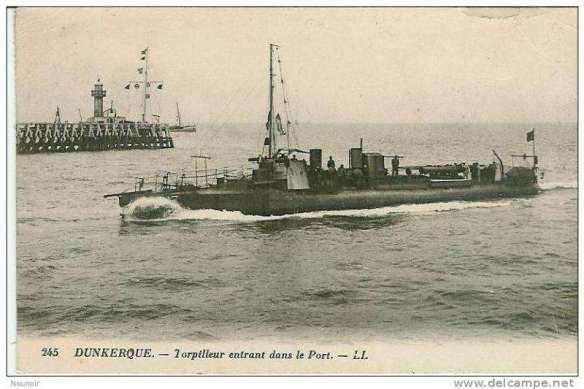
Torpilleur 315 from the French torpedo boat 295 class.
TORPILLEUR 317 TORPEDO BOAT 1905-1916
Weight (tons): 100 grt
Dimensions: 40.2 x 4.4 x 2.6 m
Armament: 3 x T.T., 2 x 37 mm guns
Propulsion: steam
Power: 2000 horsepower
Torpilleur 317
Built by Chantiers Dubigeon, Nantes in 1905 and owned at the time of her loss by French Navy, was a French torpedo boat of 100 tons.
On December 28th, 1916, Torpilleur 317 was sunk by a mine from the German submarine UC-1 (Oskar
Steckelberg), off Calais. 9 crew were lost.
A torpedo boat is a relatively small and fast naval vessel designed to carry torpedoes into battle. The first designs rammed enemy ships with explosive spar torpedoes, and later designs launched self-propelled Whitehead torpedoes. They were created to counter battleships and other large, slow and heavily armed ships by speed and agility. A number of inexpensive boats attacking en masse could overwhelm a larger ship’s ability to fight them off using its large, slow-firing guns. This way an inexpensive fleet of torpedo boats could defend against much larger and more expensive fleets, albeit only in the coastal areas to which their small size and limited fuel load restricted them.
The introduction of fast torpedo boats in the late 19th century was a serious concern to navies of the era. In response, navies operating large ships introduced smaller ships to counter the threat. These were essentially similar to the torpedo boats they faced, but mounted a light gun instead of torpedoes. As these designs became more formalized they became known as “torpedo boat destroyers”, and eventually evolved into the modern destroyer.